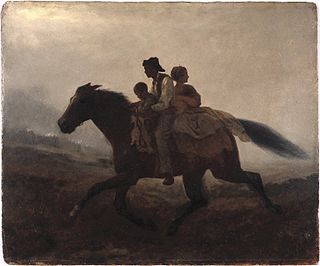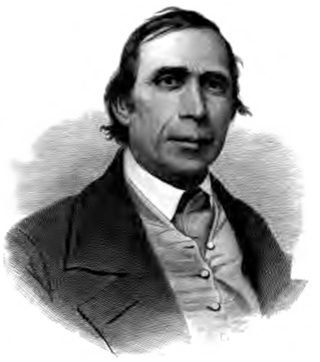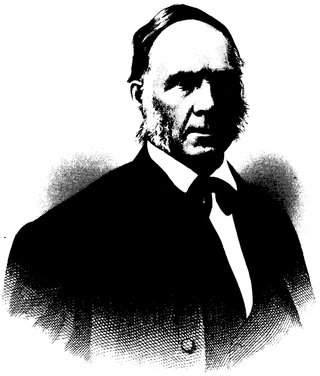Related Research Articles

The Underground Railroad was a network of secret routes and safe houses established in the United States during the early to mid-19th century. It was used by enslaved African Americans primarily to escape into free states and from there to Canada. The network, primarily the work of free African Americans, was assisted by abolitionists and others sympathetic to the cause of the escapees. The slaves who risked capture and those who aided them are also collectively referred to as the passengers and conductors of the Railroad, respectively. Various other routes led to Mexico, where slavery had been abolished, and to islands in the Caribbean that were not part of the slave trade. An earlier escape route running south toward Florida, then a Spanish possession, existed from the late 17th century until approximately 1790. However, the network generally known as the Underground Railroad began in the late 18th century. It ran north and grew steadily until the Emancipation Proclamation was signed by President Abraham Lincoln. One estimate suggests that, by 1850, approximately 100,000 slaves had escaped to freedom via the network.

Mary Ann Camberton Shadd Cary was an American-Canadian anti-slavery activist, journalist, publisher, teacher, and lawyer. She was the first black woman publisher in North America and the first woman publisher in Canada. She was also the second black woman to attend law school in the United States. Mary Shadd established the newspaper Provincial Freeman in 1853, which was published weekly in southern Ontario. it advocated equality, integration, and self-education for black people in Canada and the United States.

Henry Highland Garnet was an American abolitionist, minister, educator, orator, and diplomat. Having escaped as a child from slavery in Maryland with his family, he grew up in New York City. He was educated at the African Free School and other institutions, and became an advocate of militant abolitionism. He became a minister and based his drive for abolitionism in religion.

In the United States, fugitive slaves or runaway slaves were terms used in the 18th and 19th centuries to describe people who fled slavery. The term also refers to the federal Fugitive Slave Acts of 1793 and 1850. Such people are also called freedom seekers to avoid implying that the enslaved person had committed a crime and that the slaveholder was the injured party.
Amos Noë Freeman was an African-American abolitionist, Presbyterian minister, and educator. He was the first full-time minister of Abyssinian Congregational Church in Portland, Maine, where he led a station on the Underground Railroad.

John Rankin was an American Presbyterian minister, educator and abolitionist. Upon moving to Ripley, Ohio, in 1822, he became known as one of Ohio's first and most active "conductors" on the Underground Railroad. Prominent pre-Civil War abolitionists William Lloyd Garrison, Theodore Weld, Henry Ward Beecher, and Harriet Beecher Stowe were influenced by Rankin's writings and work in the anti-slavery movement.

Rev. Jermain Wesley Loguen, born Jarm Logue, in slavery, was an African-American abolitionist and bishop of the African Methodist Episcopal Zion Church, and an author of a slave narrative.

Abby Kelley Foster was an American abolitionist and radical social reformer active from the 1830s to 1870s. She became a fundraiser, lecturer and committee organizer for the influential American Anti-Slavery Society, where she worked closely with William Lloyd Garrison and other radicals. She married fellow abolitionist and lecturer Stephen Symonds Foster in 1845, and they both worked for equal rights for women and for Africans enslaved in the Americas.

Jonathan Walker, known as "The Man with the Branded Hand", was an American reformer who became a national hero in 1844 when he was tried and sentenced as a slave stealer following his attempt to help seven runaway slaves find freedom. He was branded on his hand by the United States Government with the markings "S S", for "Slave Stealer".

Erastus Hussey (1800–1889) was a leading abolitionist, a stationmaster on the Underground Railroad, and one of the founders of the Republican Party. He supported himself and his family as a farmer, teacher, businessman, legislator, and editor.
Stephen Symonds Foster was a radical American abolitionist known for his dramatic and aggressive style of public speaking, and for his stance against those in the church who failed to fight slavery. His marriage to Abby Kelley brought his energetic activism to bear on women's rights. He spoke out for temperance, and agitated against any government, including his own, that would condone slavery.
The History of slavery in Michigan includes the pro-slavery and anti-slavery efforts of the state's residents prior to the ratification of the Thirteenth Amendment to the United States Constitution in 1865.

Sarah Holley served as an educator to African Americans during the mid-1800s, becoming an avid member of the American Anti-Slavery Society. Specifically, Holley worked closely with Caroline Putnam to establish the Holley School, which still stands today.
Edwin Weyburn Goodwin was an American itinerant miniature and portrait painter active in upstate New York, and father of trompe-l'oeil painter Richard La Barre Goodwin. An abolitionist, he was a stationmaster on the Underground Railroad and published the anti-slavery newspaper The Tocsin of Liberty.

Black Canadians migrated north in the 18th and 19th centuries from the United States, many of them through the Underground Railroad, into Southwestern Ontario, Toronto, and Owen Sound. Black Canadians fought in the War of 1812 and Rebellions of 1837–1838 for the British. Some returned to the United States during the American Civil War or during the Reconstruction era.
Kentucky raid in Cass County (1847) was conducted by slaveholders and slave catchers who raided Underground Railroad stations in Cass County, Michigan to capture black people and return them to slavery. After unsuccessful attempts, and a lost court case, the Fugitive Slave Act of 1850 was enacted. Michigan's Personal Liberty Act of 1855 was passed in the state legislature to prevent the capture of formerly enslaved people that would return them to slavery.
Guy Beckley (1803–1847) was a Methodist Episcopal minister, abolitionist, Underground Railroad stationmaster, and lecturer. The Guy Beckley House is on the National Park Service Underground Railroad Network to Freedom and the Journey to Freedom tour. It stands next to Beckley Park, which was named after him.
The Signal of Liberty was an anti-slavery newspaper published in the mid-19th century in Michigan. The decision to publish a newspaper was one of the outcomes of the founding meeting of the Michigan Anti-Slavery Society that met for several days beginning on November 10, 1836 in Ann Arbor of the Michigan Territory (1805–1837). In 1838, Nicholas and William Sullivan published Michigan's first antislavery newspaper, the American Freedmen in Jackson, Michigan. Seymour Treadwell published and was the editor of the Michigan Freeman in 1839. The papers did not have a regular printing schedule.
References
- 1 2 Mull, Carol E. "Signal of Liberty". Ann Arbor District Library. Retrieved 2022-03-30.
- 1 2 3 4 5 Asher, Taryn (2020-02-06). "Michigan's fight to abolish slavery caused a rift in the Presbyterian Church". Fox2 Detroit. Retrieved 2022-03-31.
- ↑ "Elizabeth Chandler". Michigan Women Forward. Retrieved 2022-03-31.
- 1 2 3 "The Underground Railroad in Ann Arbor". Ann Arbor District Library. Retrieved 2022-03-31.
- ↑ "Fugitive Slave Acts". HISTORY. Retrieved 2022-03-31.
- ↑ "Signal of Liberty (Ann Arbor, Mich.) 1841-1848". Library of Congress, Washington, D.C. Retrieved 2022-03-31.
- ↑ "Michigan Anti-Slavery Society". Ann Arbor District Library. Retrieved 2022-03-31.
- ↑ Coggan, Blanche (1964). "The Underground Railroad In Michigan". Negro History Bulletin. 27 (5): 125–126. ISSN 0028-2529 – via Jstor.